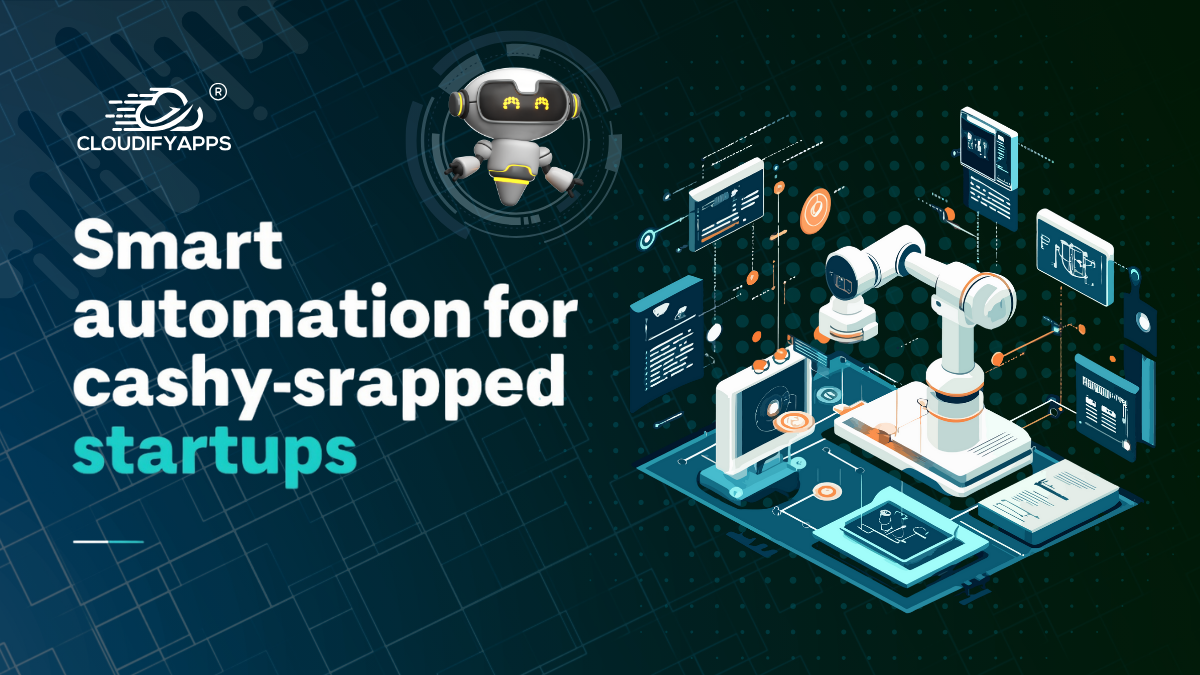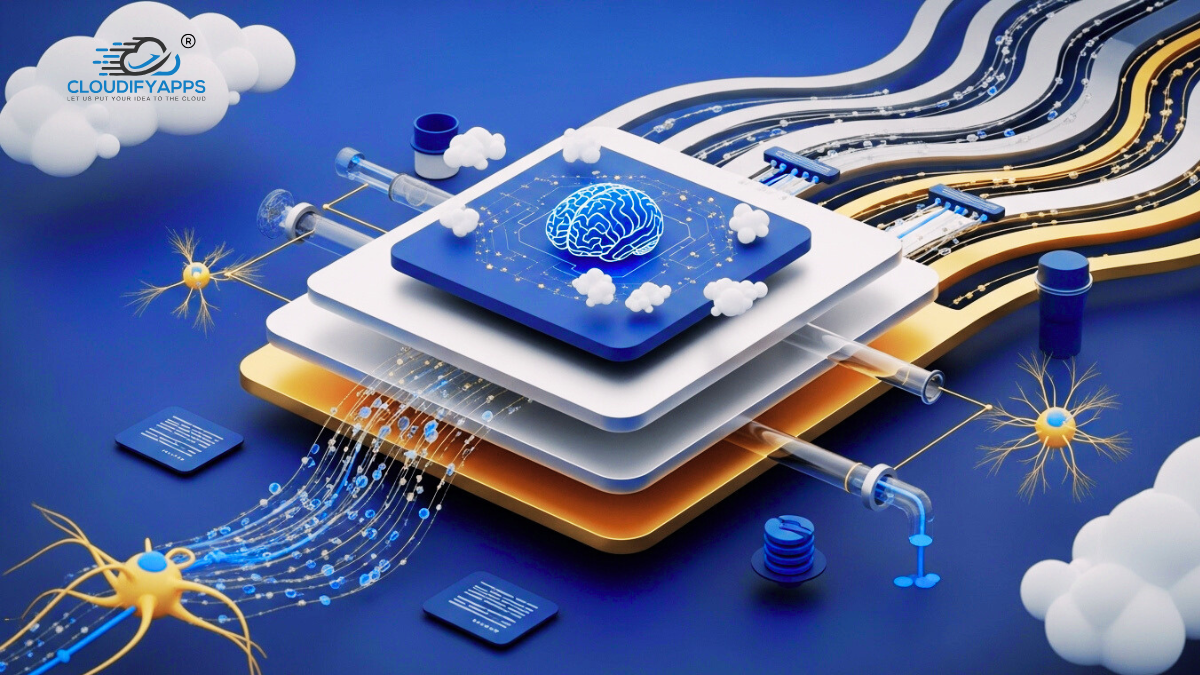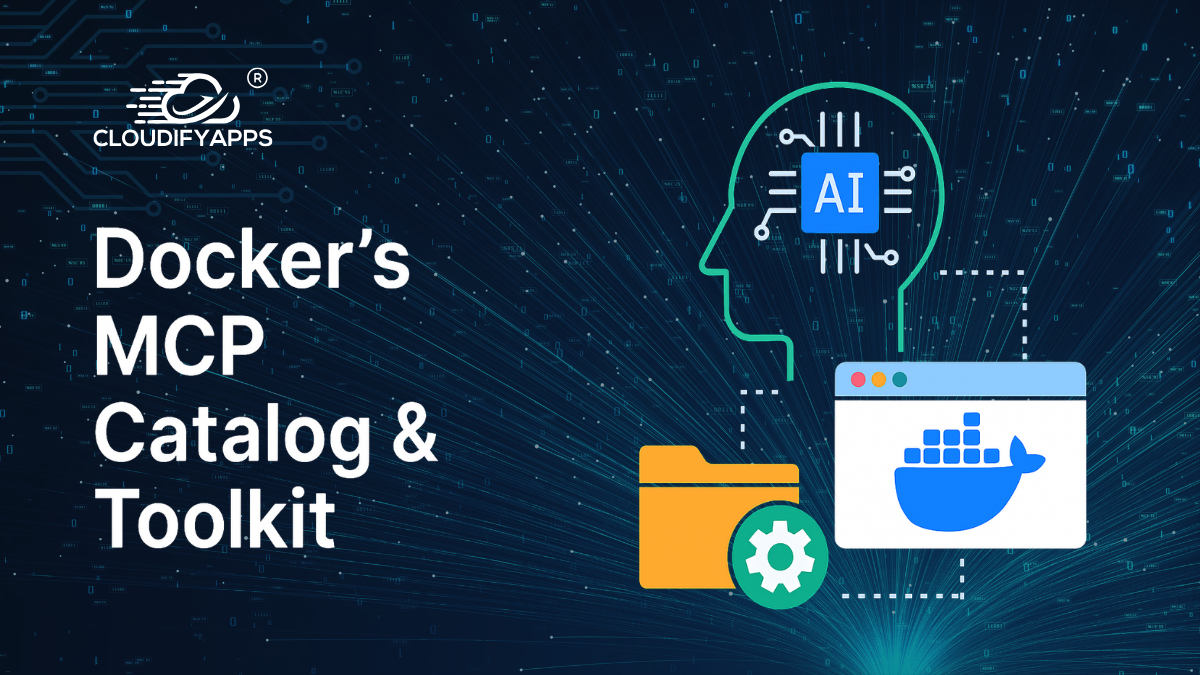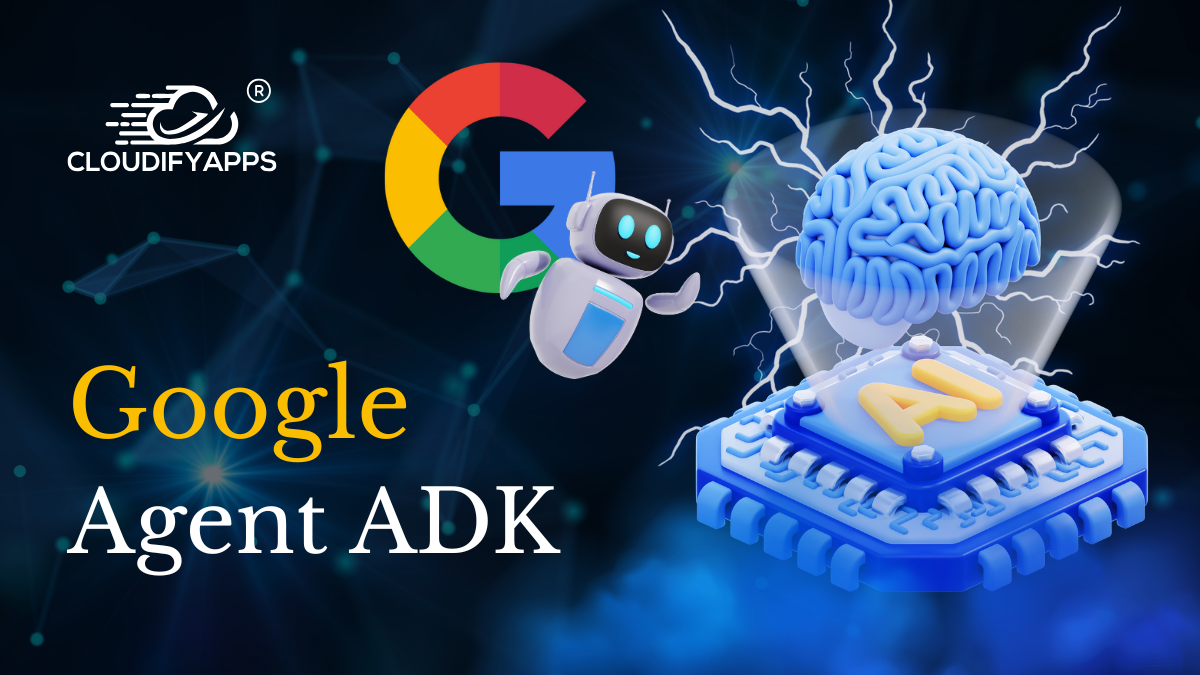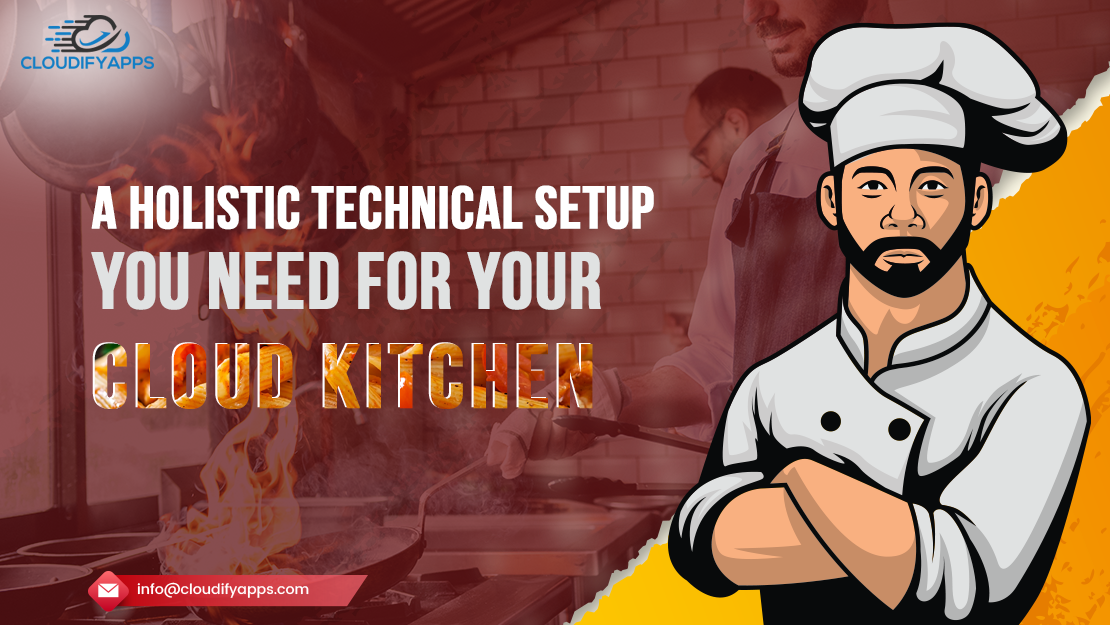
Success Mantras for a Virtual Restaurant Using a Cloud Kitchen
Introduction
It is no secret that restaurants in the US are a common sight. Every alley you turn to, you would be able to smell many delicious aromas wafting towards you. It has been revealed in a 2014 blog by Thewebminer that as of December 2014, the world boasts almost 15 million organized eating joints in the world. Each restaurant and each eatery among that 15 million has its own cemented speciality and flavour, which sets it apart from the crowd.
In this highly competitive stage, the number of restaurants in the US also gradually grew to almost 140,846 as of Feb 1, 2019, before falling sharply to 134,310 a year later due to the emergence of Covid-19.
Not only the US, the entire world and all sectors of life were rocked by Covid-19, and restaurants were all the more abandoned as it included the intimate actions of eating with cutlery which was used by many. This caused many restaurants to face heavy losses (estimated to go as high as USD 675 Billion in the US alone) as they had to swallow the bitter pill of lockdown to survive.
In this period, the hunger pangs of the disgruntled populace were immediately satiated by the miraculous rise of the cloud kitchen model adopted by many popular restaurants and virtual kitchens alike.
This idea immediately took off as the entire process was carefully handled with no danger of infection as all safety protocols were followed. With a steady fan following, it is no surprise that the revenue generated from this business model essentially doubled over a year, i.e., from 2019 to 2020.
To keep up with the rocketing demand, the virtual restaurants or ghost restaurants (i.e., with no offline presence) strived to use the best cloud kitchen management software and incorporate competent cloud kitchen software development to make up for the lack of dining experience presentation.
But, before getting into the advantages of selecting the best cloud kitchen management software, let's look at the cloud kitchen business model and its many forms and how each operates.
Cloud Kitchen Model
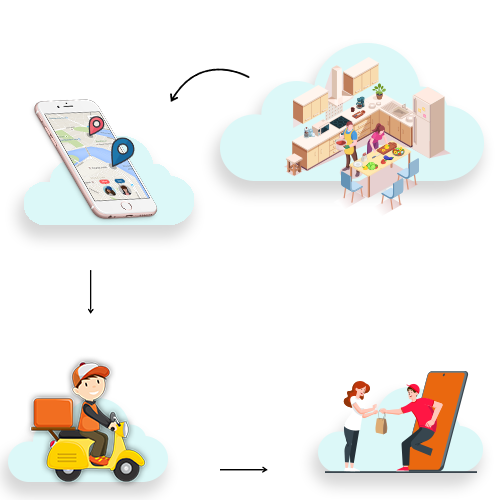
General Overview
A cloud kitchen is a space or place used to prepare food for delivery purposes only. In this place, the orders are taken via the internet or phone for those more fond of the old ways. Besides providing that added layer of security, there is also usually no need for extra decoration for the customers as fine dining is promptly sacrificed for swift deliveries to a vast amount of people.
However, it is essential to note that cloud kitchen is not always a solo venture and might be in conjunction with one or more brands or restaurant chains. All the different types are given below:
● Independent Virtual Restaurant Model - This is the most popular form of the cloud kitchen model and includes only a single kitchen with a single brand. This business model satisfies startups, small businesses, and home-cooked food businesses.
● Shared Cloud Kitchen Model - Here, multiple businesses rent commercial kitchen space and share the rent and the space accordingly. Some even share their resources to be more economical. This is the cheapest business model, suitable for startups and small businesses.
● Traditional Restaurants Integrating the Cloud Kitchen Model - Even established businesses are no stranger to this business model as they too want a share of the proverbial pie that is the vibrant online market. These restaurants might keep their online and offline orders separate or even prepare them under the same roof.
● Single Brand Multiple Cloud Kitchens Model - In this type, a single brand owns several cloud kitchens. This type is suitable for those who receive their orders in bulk.
● One Business, Multiple Brands Model - In this type of cloud kitchen business model, a single restaurant could offer different cuisines under different brand names but all jointly owned by an established business. This model is only suitable for those who own large businesses.
● Ghost Kitchen - This model includes a storefront from which the food is delivered via a pickup/takeaway option. The only difference with traditional eateries is their lack of dining arrangements.
● Aggregator Model - This business model houses or aggregates many cloud kitchens that take orders on this app only charge a nominal fee from the restaurants that receive orders via the app.
The business is conducted by ensuring expert use of the cloud kitchen management software, coupled with elite cloud kitchen software development to allow no errors in the entire process.
Operational Procedure
Due to being economical on the design aspect of things, the cost of seating many customers is essentially absent in the simple cloud kitchen model. Therefore, a business can then focus entirely on food production in general.
The entire model operates with the notion of keeping speed and quantity consistent with the customers' demands. To that end, well-trained staff and prompt availability of materials are paramount. One or more restaurants can share the space, allowing costs of materials and other miscellaneous expenses to be further cut down.
Orders are received by a food delivery app for cloud kitchen business model, which is then prepared, packed, and delivered to the specified address. The entire process is made, wasting no time on superficial worries like seating arrangements, etc., so the time taken is naturally less vis-à-vis the traditional brick and mortar arrangement.
Some Statistics to Note
Since its rise in the early months of 2020, the online cloud kitchen model has witnessed a meteoric rise in popularity. Online food delivery has become 300 times as prevalent during the pandemic. Here are some relevant stats charting the meteoric growth of this sector :
● According to Statista, the decline in the rate of seated diners and physical customers was a staggering 50.31% by the end of 2020.
● The industry, valued at USD 43 billion in 2019, is estimated to reach a hefty figure of USD 71.6 billion by 2027, with a Compound Annual Growth Rate (CAGR) of 12% from 2021 to 2027.
● The cloud kitchen service in the US is widespread, with there being almost 1,500+ ghost kitchens and counting.
Benefits of Choosing Cloud Kitchen Software Development
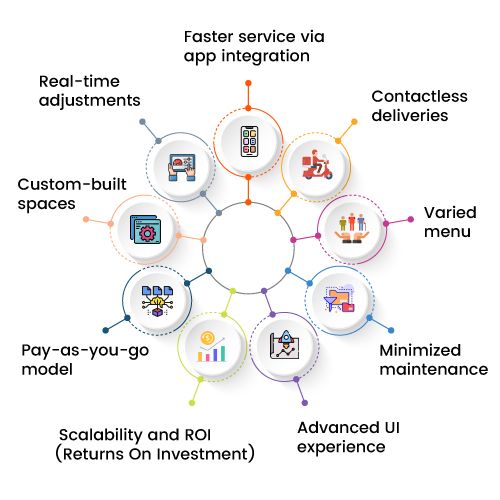
Overall, choosing the cloud kitchen model of business has its advantages and idiosyncrasies. Some of them are :
Faster Service Via App Integration
With the app's arrival, the orders of each dish or preparation will take very little time as the main focus is always on speed and quantity produced.
The food delivery app for cloud kitchen also offers timely updates on the preparation status of the food as well as the current position of the food after it has left for delivery. Not only does this promote a relationship of clarity between the consumer and supplier, but it also allows the customer to opt for their favourite food from the comfort of their homes.
Contactless Deliveries
With the pandemic still looming large, the fear of contracting the dreaded disease was at an all-time high in 2020. With the general population extremely mindful of safety protocols, the cloud kitchen models contactless delivery and the un-intimate delivery process naturally resonated with the masses.
With the power of recommendations, many cloud kitchens gained overnight fame as they performed their utmost best to observe Covid protocols laid out during the tumultuous times. Another benefit of contactless deliveries is that it reinstates the notion of brand image to the consumer. With a good experience, the customer is left with a good impression of the company.
Custom-built Spaces
As the entire process is significantly more mobile than an established brick-and-mortar enterprise, cloud kitchen software development takes into account real-life adjustments to the kitchen space, which is naturally reflected in the food delivery app for cloud kitchen.
With no compulsion to house and worry about visiting guests, the space to work with has been significantly reduced, resulting in a subsequent reduction in investment costs. All that is needed for a cloud kitchen to operate is a kitchen and little else.
Minimized Maintenance
With all the showmanship of traditional restaurants out of the way, ghost kitchens or virtual kitchens are only concerned with preparing the food and the food only. However, the main recipe for their success is also in part inclusive of the expenses averted during the upkeep of the kitchen in general.
Traditional restaurants have to spend a lot for upkeeping and maintaining their premises to keep up their prestige for the incoming customers. However, online or virtual kitchens face no issue. The only real cost of maintenance for online restaurants is the server's upkeep, which is honestly not that much hassle, but more on that later.
Pay-as-you-go model
With the employees not being bound by any contract, the daily wage of the team of workers is divided according to the work done. The food delivery app for cloud kitchen keeps a detailed summary of the total number of dishes ordered and the number delivered properly.
The cost of the successfully delivered dishes is divided and then paid to the staff after various deductions of the platform. There would also be no shortage of on-demand labour. On-demand labour is labour that does not officially belong to the company or enterprise they are hired by but works whenever required.
Varied Menu
Cloud kitchen software development also allows for the inclusion of a number of dishes or cuisine under different brands of the same business. The main aim of creating different brands is to take advantage of the sheer variety of dishes.
With a competent staff, maintenance and the normal function of the business are upheld while the sheer variation in the menu is maintained.
Scalability and ROI (Returns On Investment)
With the room for growth being immense, the business is 100% scalable, and the returns on investment are massive. With the current trend, the revenue earned in the online restaurant sector will increase substantially within the next few years.
Many prudent business owners have already created their food delivery app for the cloud kitchen model of business by employing a competent mobile app development company or a capable restaurant software development company.
Advanced UI Experience
Most competent food delivery apps require their interface to be very easy to navigate for the commoner. It must be free-flowing, allowing for basic features such as searching restaurants and dishes by name. A good food delivery app for cloud kitchen model also includes remembering the preferences of the customer with an advanced algorithm to allow a more personalized experience.
With the ruthless competition, the lucidity of form and the degree of appreciation it elicits from its customers would mandate whether or not a delivery app is truly worthy or not. Many make an effort in online apps to make up for the lack of presence in the physical dining and packaging aspect.
Real-time Adjustments
Among the most important reasons to opt for cloud kitchen software development is the simple yet vital step to adjust the menu accordingly to the availability of resources and reflect likewise in the app.
In the offline counterpart, more time and effort would inevitably be spent conveying the same information to their already waiting customers, ultimately leading them to risk the loss of face and prestige.
However, in the case of the online mode, the same information is displayed in the app, informing the customers seated in the comfort of their homes that a particular dish or preparation is not available.
The Right Tech Stack
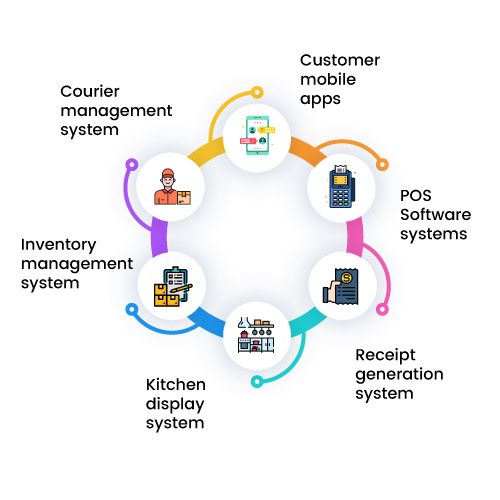
To develop the perfect cloud kitchen management software, you have to use the correct tech stack so that your food delivery app for cloud kitchen services gains much-needed popularity and simultaneously accurate functionality. Some of the viable options are as follows:
Customer Mobile Apps
Customer mobile apps are the fundamental instruments to interact with the customer and via which the customer also makes his orders known to the owner of the virtual restaurant. Here, customers can use their mobile devices to browse, select, pay for, and check their meal status.
A mobile app development company usually takes around 2-4 months to develop a mobile app tailored specifically to a business's needs, and the cost is USD 20,000 onwards. Basic features such as the menu, meal page, shopping cart, delivery address, built-in payment gateway, delivery status, review section, and rating section are a must.
POS Software Systems
POS or Point Of Sale Software systems are systems that replaced the hunky cash registers of yore. The main features of a POS system are :
● Calculates the sum total of the customer order
● Handles the payment gateway from between the consumer to the owner
● Sends the receipts via email or text to confirm successful payment.
Cloud-based POS systems are preferable as they check and tally the total sales by the end of the day and forward the tally as an excel sheet to the accountant for examination. Some of the preferable POS (cloud-based) are:
● Square
● Toast
● Vend
Receipt Generation System
With the receipt generation system, generating receipts and invoices for the goods is but a simple task. The entire process is automated and digitized, eliminating the number of process steps, average touch time, and potential for human error.
The process also includes data centralization to promote strategic decision-making and avoid data error and duplication. Some of the top services are:
Kitchen Display System
To deliver your order within the industry standard of 30 minutes, you would need your chefs to prepare the meal within 10-12 minutes of the order. To ensure instant communication of the order and the ingredients, a Kitchen Display System or KDS must be installed within the environment.
After the client has placed the order, the KDS system receives all the necessary information and conveys it in full along with the time to the KDS display system to be viewed by the staff. Some of the best options are :
● Upserve
● Vend
● Toast
Inventory Management System
It is essential to maintain or have a clear idea about your inventory to avoid unnecessary complications if a particular inventory were to run out. To avoid such a loss of face, you must keep an intelligent inventory management system handy, which would allow you to
● Check your daily stock consumption
● Reduce wastage
● Keep control of your expenditures
The best solutions for an inventory management system are :
● Lavu
Courier Management System
If you want to avoid the hassles of employing a third-party courier service that could jeopardize your reputation in case of any lapse or delay, your only solution would be to contact any restaurant software development company. You can request a bespoke courier app which would cost about USD 20,000 and would allow you to:
● Manage your personnel
● Monitor the route which he takes
● The total time elapsed
● Order history of all previous items delivered by the courier
● Map of the city
Final Thoughts - Looking to the Future
With the way technology progresses, it would not be very long that the entirety of brick-and-mortar restaurants is reduced to distant remnants of history like the Telegraph. With the Compound Annual Growth Rate (CAGR) signifying an increase of as much as 16% over the coming 10 years, the future of online restaurants and the path to success via virtual restaurants looks far from bleak.
Who knows? Maybe, in the future, food will only be served via cloud servers and delivered via cloud services made possible by any revolutionary mobile app development company or a restaurant software development company.
Suffice to say that a future where all food reaches us within 30 minutes will be a boon for sure. However, the prospect of complete extinction of the traditional restaurant form does leave a sour aftertaste in one's mouth.
Popular Tags
Recent Posts
Smart automation for cash-strapped startups
The modern data trinity: How medallion architecture, RAG, and data lakes revolutionize enterprise intelligence
Accelerating AI-Driven Development with Docker’s MCP Catalog & Toolkit
Building Intelligent Agent Teams with Google's ADK: A Developer's Guide
We are at




















